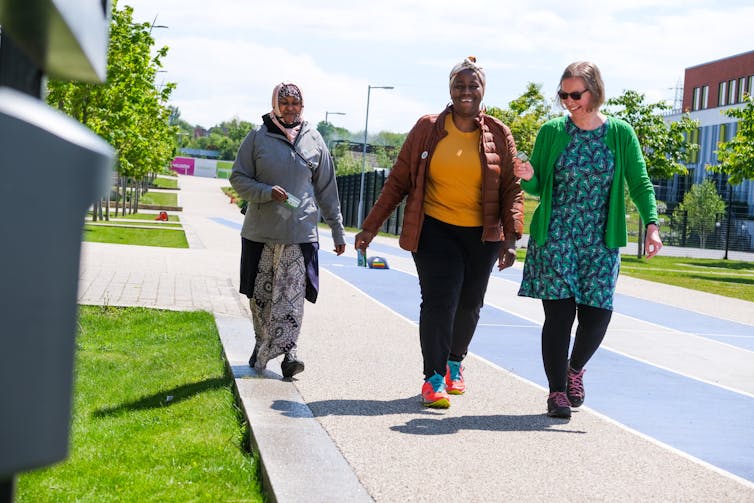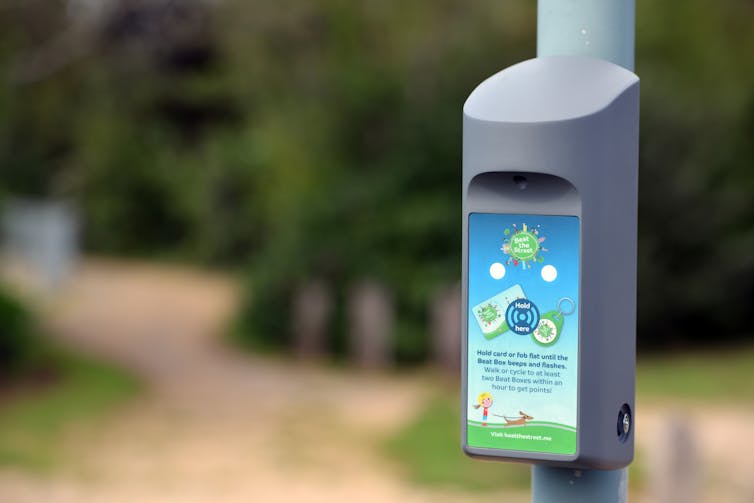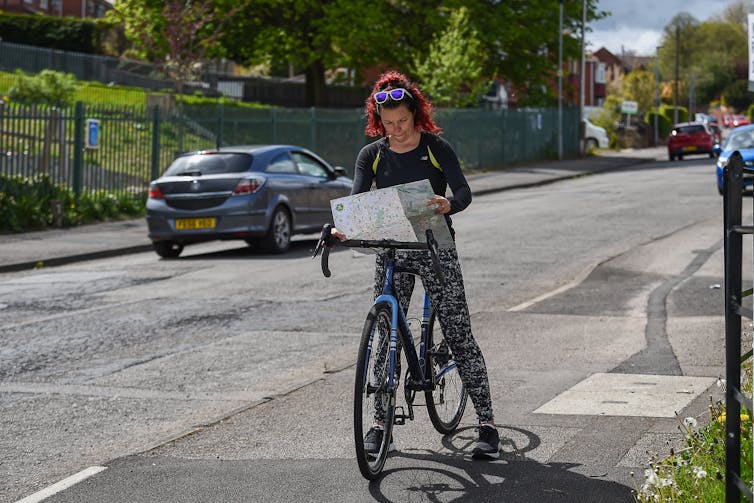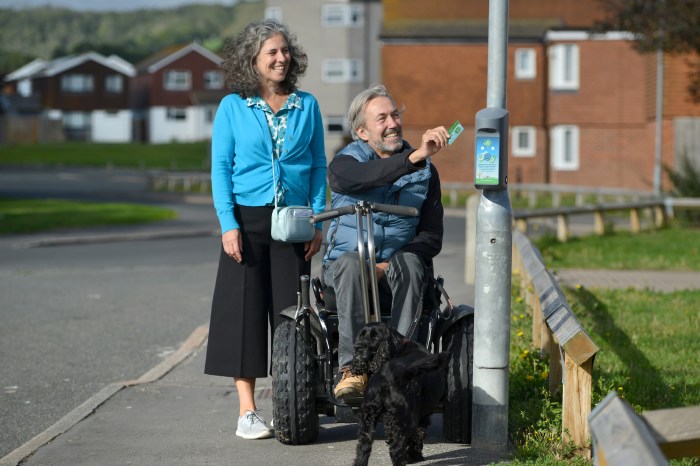We transformed a London borough into a game to get fewer people travelling by car — here’s what happened

In England, only 37% of adults aged 16 or over travel actively (walk, cycle, scoot or wheel to get from place to place) at least twice a month. We need to find exciting ways to encourage more people to travel actively for the sake of population and planetary health.
Active travel can help reduce congestion, air pollution and climate change. However, in the UK – as in many countries across the world – travelling by car remains the dominant social norm.
Our research shows that gamification – offering points, badges, prizes or spots on a leaderboard in exchange for participating in specific, non game-related activities – can encourage people to travel actively to school or work.
To test this, we set up a gamification initiative called Beat the Street to see whether it could encourage people in the London borough of Hounslow to travel actively.
During our game, which ran from 18 September to 30 October 2019, residents and visitors to Hounslow could earn points by tapping a card on physical boxes placed throughout the borough. Players were given 10 points each time they touched two boxes consecutively with a card, indicating they had actively travelled between them. And yes, we made sure to remove any obvious cheaters from the game.
At the end of the six-week game, the highest scoring individuals and teams (schools, community groups and workplaces) were rewarded with prizes, such as vouchers for sports equipment, craft materials or books.

Author provided
We investigated the impact of this game on active travel by looking at when people played, comparing how active people said they were before and after the game, and using a traffic camera to look for a reduction in motorised vehicles travelling along a frequently congested local road.
Methods
I walked far more than I would normally have walked: about five times as much. I visited roads that I have never walked down before or even didn’t know existed and I have lived in the borough all my life!
(Male participant, aged 60-69)
Over the course of the game, 28,219 people took part (9.6% of the population of Hounslow). Collectively, they travelled 96,849 miles.
In total, participants recorded 638,697 taps on the 161 “beat boxes” situated throughout the borough. Over half of all these taps were made between 08:00-08:59 and 15:00-15:59, which are typical periods of travel between home and school or work.

Author provided
To look more closely at specific physical activity outcomes, we asked 346 adults to complete a physical activity questionnaire before and after taking part in the game.
These results showed that the proportion of participants who reported being physically inactive (defined as taking part in fewer than 30 minutes of activity per week) decreased from 25% pre-game to 18% post-game. And the proportion of participants who reported meeting the World Health Organization’s target of 150 minutes of moderate intensity activity a week increased from 62% pre-game to 75% post-game.
It certainly was motivational for the kids, which then motivated me! Once they got into it, they wanted to walk everywhere, and started to refuse to go to school in the car. So we’re walking to school only now!
(Female participant, aged 30-39)
Next, to provide an objective measure of behaviour change achieved through the game, we observed local traffic through a monitoring camera. We assessed the number of vehicles travelling in both directions along the often-congested Cambridge Road, between 07:00-09:30 and between 14:00-16:30.

Author provided
The data we collected showed that between the week before and the week following Beat the Street, 1199 fewer cars (a 53% reduction) and 130 fewer vans (also a 53% reduction) travelled along Cambridge Road between 07:00-09:30, and 705 fewer cars (a 34% reduction) and 36 fewer vans (a 20% reduction) travelled along the road between 14:00-16:30.
These findings suggest that turning a whole area of a town or city into an interactive game could be a promising approach to nudge people into travelling by foot, bicycle or wheelchair.
Implications
It was a very nice way to motivate people to walk and also it created a team. Every day it gave you the enthusiasm to get up and walk to raise money for charity.
(Female participant, aged 70-79)
One of the major issues faced when attempting to move people away from using cars and towards sustainable transport options is the fact that cars indicate a high social status, making many reluctant to get rid of them.
Another problem is the ingrained nature of car use for short journeys, where many people instinctively choose to drive for convenience or just as a habit. This means that many suggested ways to decrease car usage, like increasing taxes on fuel or congestion, aren’t usually supported by policymakers, who may fear backlash from interfering with many people’s preferred way of life.
I was choosing to scoot or walk instead of a car ride and I was taking longer ways to get home to be able to add some points.
(Female participant, aged 30-39)
In light of this, gamification can be used to create an environment where behaviours such as walking, cycling or wheeling to school or work are viewed more positively than car use. The mass appeal of community-level competitions like these, which reward active travel with points, badges and a higher position on a leader board, may be more effective in shifting the social norms of the communities in which they take place.
![]()
Dr Marc Harris is employed by Intelligent Health, who helped deliver the Beat the Street intervention.
Diane Crone does not work for, consult, own shares in or receive funding from any company or organisation that would benefit from this article, and has disclosed no relevant affiliations beyond their academic appointment.



